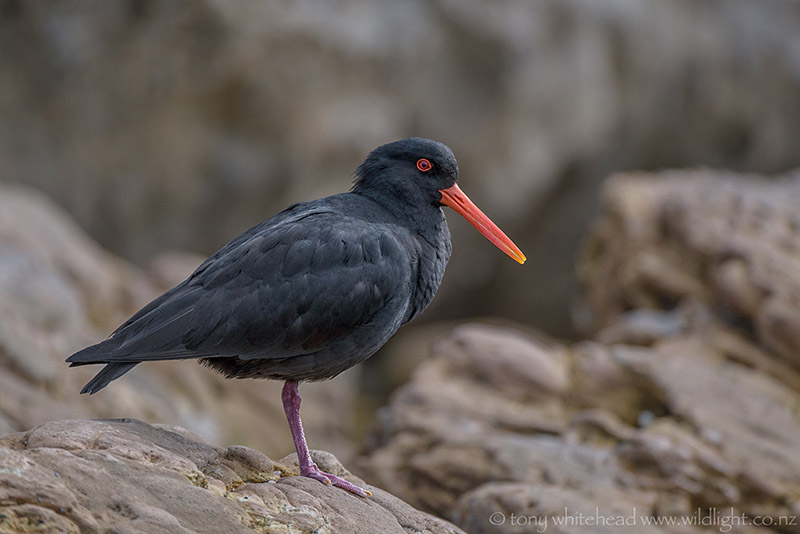This week we’re again at Mount Maunganui, this time for a Variable Oystercatcher and an update on the New Zealand Fur Seals. A clear day leaving Rotorua, found a rain cloud over Mount Maunganui, so our planned picnic was enjoyed in the car before heading off for a warm drink. Fortunately the sun came out so our walk was only delayed. The New Zealand Fur Seals that I wrote about in last week’s post were still in attendance, this time with two large males, two females and the young pup that I had seen was visible too, so was not the casualty we had seen on the beach on our last trip. Most co-operative of all was a pair of black phase Variable Oystercatchers that were sitting on the rocks close by. They were quite relaxed and allowed a cautious approach. The lighting was lovely with soft diffused light from sun behind the birds shining through a layer of cloud. This gave low contrast light but also an element of backlighting which made the orange beak really glow. Flat frontal lighting is often talked of as the preferred light for bird photography as it eliminates shadows but there is some real benefit to different lighting directions which can accentuate plumage texture and body contour or colour as shown in this image.
In mainland New Zealand we have two oystercatchers, The Variable and South Island Pied. The Variable Oystercatcher gets it’s name from the variability of it’s plumage, which can be all black as in this individual, or pied black and white with varieties in-between mainly black with some white feathers, and some are occasionally all white. The pied morphs can be confused with South Island Pied but the Variable is generally larger and the South Island Pied has more white showing in front of the folded wing. See NZBirdsonline for more images and information on the Variable and South Island Pied Oystercatchers.




